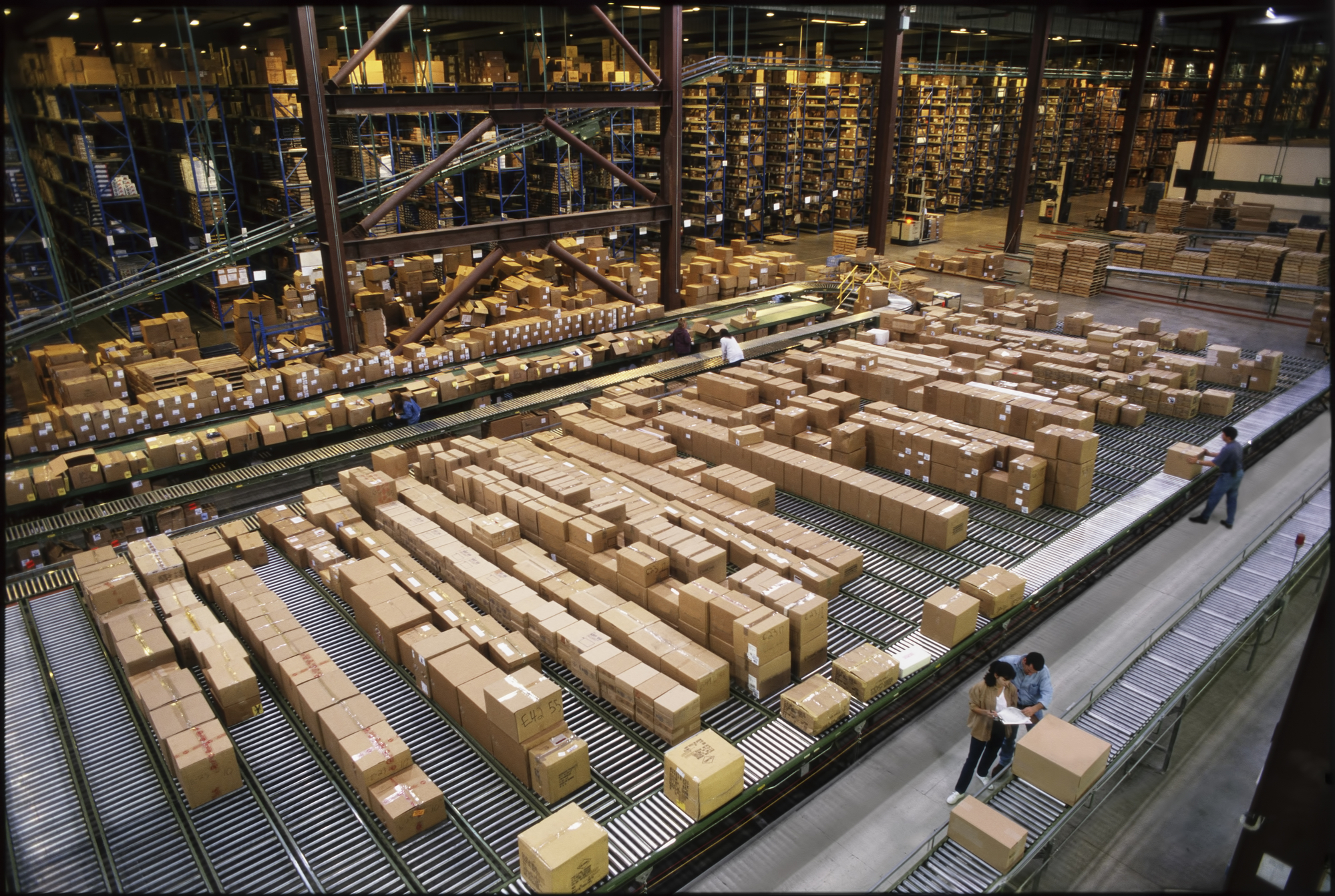Unlike the long-held belief that sustainability often comes at the expense of profit, a modern approach to environmental, social, and governance (ESG) in supply chains finds the right balance between doing good for the business and the planet.
For years, supply chain leaders have struggled with the challenge of making their operations more sustainable while keeping costs in check. The assumption was simple: Prioritizing ESG initiatives meant sacrificing efficiency, margins, or both. But today, that mindset is shifting. Companies are proving that sustainability and profitability aren’t at odds – in fact, they can be mutually reinforcing.

With increasing regulatory pressures, evolving customer expectations, and investment incentives for ESG-forward practices, integrating ESG into your supply chain strategy is no longer optional – it’s a competitive advantage. More than 50% of businesses surveyed in Deloitte’s 2024 Sustainability Action Report say they’re building cross-functional ESG working groups to strengthen resilience, reduce risk, and drive long-term growth.
What is the current role of ESG in supply chains?
Environmental, social, and governance (ESG) is a set of criteria that assess a company’s impact on sustainability, ethics, and corporate responsibility. ESG standards determine if the company’s business model and internal and external operations, like those with suppliers and manufacturers, are socially responsible and sustainable.
Supply chain traceability is at the heart of ESG. It’s the ability to track the journey of raw materials, components, and finished goods across a company’s supply chain, answering questions such as:
- Where do our raw materials come from? Are they sourced from deforested or high-risk areas?
- Are the workers in our supply chain paid fairly and working in safe conditions? Are our manufacturers involved with any child labor law violations?
- Do we have full visibility into our tier 1, tier 2, and tier 3 suppliers? Are we identifying risk and compliance issues at every level of our supply chain?
- Are we tracking our Scope 3 emissions and reducing them when possible?

ESG in supply chains has evolved from a voluntary responsibility effort to a global business imperative. Disasters like the Rana Plaza Collapse in 2013 prompted safer labor conditions laws, and more recent events show just how important these laws still remain. Take the uncovering of child labor in fashion giant Shein’s supply chain, which may put a damper on the company’s ability to sell shares on the stock market. Meanwhile, climate-driven supply chain disruptions like arabica bean shortages in Peru and Mexico are pushing companies towards sustainable sourcing practices to avoid delays.
Today, many regulations aim for greater transparency and accountability in supply chain operations, with the EU leading the way with strict ESG laws. While U.S. ESG regulations remain uncertain, individual states are strengthening policies. Global, U.S.-based companies must still comply with international laws to operate and sell across borders. Investors and consumers are also pressuring companies to make serious strides in their ESG efforts. If a company wants to remain competitive, a strong ESG strategy is a must.
Environmental
The environmental pillar covers how a company interacts with and impacts the natural environment. It includes a company’s carbon footprint, emissions, resource management, and waste and pollution efforts. Scope 3 emissions – those generated from a company’s global supply chain – account for, on average, 75% of a company’s overall emissions. Because supply chains are the biggest contributing factor to emissions, there have been increased environmental regulatory requirements globally.
Take California’s ESG regulations. Businesses in the state must now report their greenhouse gas emissions, financial risk associated with climate change, and voluntary carbon offset measures. It’s the first of its kind legislation in the U.S., with several other states looking to pass similar requirements.
On the other side of the globe, the EU is a long-standing leader in ESG. Countries like Canada, Japan, and Australia often look to the EU’s ambitious environmental regulations as a blueprint for their own. For example, the Corporate Sustainability Reporting Directive (CSRD) is an EU law that mandates enhanced sustainability reporting and third-party auditing for companies with significant operations in the region. In 2022 and 2024, Japan and Australia both passed similar laws.
Social
The social component evaluates how a company treats communities and broader stakeholders. It includes internal labor practices and human rights, holding suppliers accountable for fair labor, corporate philanthropy, and ethical product safety.
There are several regulations in place across the globe that enforce strong social policies, like the German Supply Chain Act that came into effect in 2023. It requires businesses to monitor their supply chains for human rights violations and other compliances with environmental standards. Although the act is currently implemented, there are still looming questions about the practicality of its reporting efforts – which often fall to a company’s smaller suppliers that have fewer resources to pull the necessary information.
In the U.K., the Modern Slavery Act requires companies to prevent and mitigate modern slavery and human trafficking within their supply chains and to publish statements on what actions they’ve taken to achieve this.
It’s not just governments that are enforcing these policies. Consumers are increasingly choosing ethical brands. A study by NielsonIQ of sales data across 600,000 individual products found that products that made ESG-related claims averaged 28% cumulative growth over five years versus 20% for products with no such claim.
Governance
Governance refers to a company’s systems, policies, and leadership structures that ensure accountability and ethical decision-making. In global supply chains, governance means promoting fair and transparent bidding (avoiding kickbacks for selecting certain suppliers), having stringent third-party risk monitoring for compliance violations, and increasing the traceability of goods and services.
The Dodd-Frank Act of 2010 is an example of a governance regulation. It increased risk monitoring and provided more consumer protections for bank-related products. In the EU, the Corporate Sustainability Due Diligence Directive (CSDDD) requires large companies to conduct human rights and environmental assessments across their supply chains.
Why is ESG important for supply chains?
Investors, regulators, and consumers increasingly use ESG to gauge a company’s supply chain sustainability and long-term resilience. Major institutional investors now factor ESG scores into investment decisions. Even 78% of consumers are willing to pay 5% more for products with eco-friendly materials. Businesses that prioritize ESG can enhance brand reputation, attract capital, and build customer loyalty – all important factors for growth.
“Brand trust around ESG has a direct impact on investment and customer retention,” says Sahana Subramanian, Sr. Manager, Supply Chain, Coupa. “Supply chain sustainability can be a good selling point, especially for companies in verticals like consumer goods and food and beverage. Procuring materials in the most sustainable way and tailoring your packaging can really set you apart from competitors.”
Sahana Subramanian, Sr. Manager, Supply Chain, Coupa:
“Supply chain sustainability can be a good selling point, especially for companies in verticals like consumer goods and food and beverage.”
We also see increased legislative pressure regarding ESG from national governments, international entities, and even individual states. Supply chain transparency is needed to comply with these laws and spot potential violations before they impact operations. Beyond compliance, a strong ESG strategy also offers a competitive advantage. It helps you:
- Meet changing regulatory requirements by understanding supplier risk and emissions output across transportation modes and flows.
- Source more sustainably by incorporating ESG criteria into the bidding process.
- Increase supplier diversity to avoid overreliance on a small pool of suppliers. If material shortages or a natural disaster impacts one supplier, you can easily ramp up production with another to avoid delays.
- Create contingency plans based on market trends and AI-driven predictions to avoid disruptions, such as resource shortages or transportation bottlenecks.
- Streamline operations and strengthen supply chain resilience by optimizing inventory, reducing waste, and automating reporting efforts.
The bottom line? A well-thought-out ESG strategy is an innovation driver. Can your supply chain adapt to fast-changing consumer preferences? How about new regulations? What if a flood impacts your distribution route? Do you know what your emissions will be with a different transportation mode? And how will those new tariffs affect your sourcing strategies? By incorporating ESG into your supply chain design and planning process, you’ll build an adaptive supply chain that can easily spot risks and handle disruptions.
How to assess your ESG risk and ensure compliance
As organizations seek to implement better ESG policies, only 29% feel they have the systems and tools in place and are ready for independent ESG data assurance. The biggest challenge companies face is a lack of comprehensive supplier data that can help supply chain and procurement leaders track emissions. Other hurdles include identifying diverse suppliers, monitoring ongoing supplier risks, and onboarding suppliers that align with ESG goals.
Given the amount of data required for strong ESG policies, many supply chain leaders are often unsure where even to begin. Here are a few actions you can take to start assessing your ESG risk and ensure compliance:
Step 1: Create a baseline
What metrics do you need to improve around sourcing? How much emissions are being produced for transportation? You can’t create ESG goals without a baseline. It’s important to quantify the different variables in your supply chain so you can find areas to improve. Work with a third-party data analysis company to collect and standardize the data you need, and use a total spend management platform to centralize and analyze all of that operational data in one place. Important metrics to understand include:
- Scope 1, 2, and 3 emissions
- Energy consumption
- Waste generation and recycling rates
- Supplier ESG compliance rate
- Percentage of materials from responsible sources
Once you have a baseline, you can use more advanced tools, like a digital twin, to strengthen policies and ESG reporting.
Step 2: Use a digital twin
A digital twin is a digital representation of a physical supply chain. It uses real-time data from multiple sources, such as ERP data, factory outputs, node lanes, inventory levels, shipment schedules, and more, to provide an end-to-end view of the supply chain.
With a digital twin, you can test different scenarios and model ESG policies to optimize operations. This advanced supply chain modeling helps you understand:
- Sustainability tradeoffs and how they impact the total cost to serve.
- Whether a hub-and-spoke model (cross-docking versus direct shipping) might reduce transportation lanes and, thus, emissions.
- Economic order policies, such as buying in bulk to minimize emissions while maximizing inbound lot sizes.
- How to optimize transportation by identifying poor use of inventory or inefficient lanes.
By using a digital twin, you’ll be able to quickly answer complex questions about how new policies or regulations might impact supply chain operations. Technology is key to strategic supply chain planning and making better, faster decisions.
Step 3: Analyze data about suppliers during sourcing events
One key challenge for companies regarding ESG is collecting supplier data. According to a KPMG survey of 1,000 senior executives, more than 60% are now requesting suppliers to provide ESG data and integrating ESG screening into supplier onboarding practices (48%).
Incorporating ESG data requirements into sourcing events ensures you adhere to all compliance laws and choose the best suppliers to reach your sustainability goals. The right sourcing tool will allow you to customize events based on your evolving needs. Look to incorporate these ESG certification requirements into your sourcing strategy:
- SO 14001 (Environmental Management Systems) ensures suppliers follow global best practices for reducing emissions, waste, and pollution.
- LEED (Leadership in Energy and Environmental Design) certifies sustainable building and manufacturing facilities.
- Energy Star Certification identifies energy-efficient suppliers in manufacturing equipment and production.
- B Corp Certification recognizes companies that meet high standards of social and environmental impact.
- Fair Trade Certified verifies the ethical treatment of workers and sustainable production in food, textiles, and other goods.
- ISO 37001 (Anti-Bribery Management System) helps suppliers prevent corruption and fraud.
Once selected and onboarded, you can automatically pull this data into your contracts and procurement policies across the company with a total spend management platform. Let’s say a nurse needs to order medical supplies. He can search on the platform, and sustainable options vetted by the procurement and supply chain team automatically surface. Even casual users can make more sustainable choices for the business.
Step 4: Monitor third-party supplier risk with AI
AI is transforming third-party risk management by providing real-time visibility into supplier performance. Certain tools use a mix of data sources – external data sets, user-submitted feedback, and community data – to proactively flag risks at scale automatically.
A community-based data-sharing approach can help companies save time and money in the data collection process. Coupa’s user community provides rich supplier insights across $8 trillion in real-world, anonymized transactional data, giving companies a comprehensive view of their supplier base. It also includes industry benchmarks so leaders can evaluate their ESG performance against peers and identify areas for improvement.
Apps can be integrated with third-party risk management systems to provide additional layers of protection. Ecovadis, for example, delivers comprehensive sustainability supplier profiles on the environment, labor and human rights, sustainable procurement, and more through expert-driven data mining.
Step 5: Adopt a circular economy approach
Transitioning to a circular economy can significantly improve ESG performance and enhance efficiency and cost savings. But for many supply chain leaders, it requires proving to executive leadership that it’s worth the effort.
Use a digital twin to understand and quantify a circular economy approach in your supply chain network design. You’ll be able to answer key questions, like:
- Should customers return through stores, the distribution center, or suppliers?
- What are the impacts of taking returns at our distribution centers?
- Do we need to set up a dedicated return center? Where should it be to minimize costs?
- Do I set up some sites to refurbish and return products to sellable status?
- What are our proposed return options?
- What’s the rate of return flows by product and customers?
- What are the costs of certain return flow lanes?
Adopting a circular economy doesn’t have to be all or nothing. Start with small changes, like a limited group of products, and scale up to focus on sustainability and business impact.
Practical examples of supply chain ESG in action
Integrating ESG principles into supply chain management and design isn’t just a long-shot dream – leading companies are already making measurable progress in implementing it. From reducing carbon emissions to improving reporting capabilities, here are a few businesses leveraging ESG management software to create more adaptable and sustainable supply chains.
Microsoft balances growth while lowering emissions
By 2030, Microsoft has an ambitious goal to become carbon neutral. However, with a boom in AI technology, the company also needed to create around 100 new data centers to support its growth. The problem? Most equipment for these data centers is heavy and requires special transportation. All of this would lead to a larger carbon footprint.
60% reduction in North American trucking emissions during data center expansion
Microsoft leveraged Coupa’s Supply Chain Design and Planning tools to balance carbon, cycle time, and cost. They used a digital twin to understand forward inventory positioning, freight consolidation, and strategic distribution placements. This led to a 60% reduction in North American trucking emissions over its projected baselines. Now Microsoft has the power to visualize and test every point in its supply chain to better understand its geographic logistics to make smarter sustainability decisions.
BMO reduces supplier risk automatically
The Bank of Montreal (BMO) is an international organization with multiple business units and compliance teams. To meet strict regulatory requirements, BMO needs the most up-to-date supplier data. However, the complexity and scale of business units make managing and tracking supplier activity difficult.
75% reduction in risk assessment cycle time
Switching to a digital vetting workflow for suppliers helps the company determine the inherent risk of engagement before the sourcing process starts. All information and documentation are sent for expert validation and automatically scored. Suppliers that are selected are then monitored automatically and periodically with Coupa’s Supplier Risk & Performance, so BMO’s compliance team is alerted to any changes in risk scores. This ensures only pre-vetted suppliers within the bank’s predefined risk tolerance level are used across business units and any compliance violations are avoided. It also decreased the risk assessment cycle time by 75%, improving operational agility and employee productivity.
Tetra Pak sources more strategically
Supply chain logistics are critical in food handling. Tetra Pak sees an efficient supply chain logistics system as key to minimizing waste and expenses while enhancing efficiency and meeting regulatory requirements.
The company has evolved its strategic sourcing efforts by incorporating ESG into tendering and improving templates to standardize processes. Customizable templates and AI-driven modeling enable Tetra Pak to calculate savings and understand forecasts that inform supplier capacity.
Raul Padilla, Category Manager, Tetra Pak:
“We want to achieve net zero by 2030 in our own operations. Within logistics, we are developing KPIs so we can address them and include them in our tenders so suppliers know they are a criteria for selection.”
“Our suppliers measure in ‘tonnage,’ they measure in ‘number of pallets,’ they measure in ‘number or volume of equipment.’ We have different units of measurement that need to be translated. We do it all in Coupa’s Sourcing Optimization,” says Raul Padilla, Category Manager at Tetra Pak. “We run all these calculations and can project a forecast.”
Instead of manually running tenders from country to country, Tetra Pak now identifies ways to bundle volumes and supply chains to reduce inventory waste and improve cost savings. Including emissions and other key factors in the tendering process helps Tetra Pak make smarter decisions and meet fast-changing regulatory requirements.
Integrate ESG into every decision with Coupa
As global markets evolve and regulations change, ESG is not just a compliance requirement but a strategic advantage. Companies that create strong ESG strategies will build more adaptive, resilient, and future-proofed supply chains. Coupa can make it a reality.
Unlike other tools that offer piecemeal ESG data, Coupa embeds sustainability, diversity, and risk data across every area of spending decision-making. Easily apply ESG principles to your existing spend management process and measure progress from one easy-to-use platform. Optimize your supply chain network to reduce your carbon footprint, increase supplier diversity with 10+ million pre-vetted suppliers, and incorporate AI-driven risk monitoring with Coupa.




